Location scout and manager Douglas Dresser discusses the meticulous details, challenges and joys of his ever-changing, no-day-is-the-same line of work
 Douglas Dresser loves his job. He broke into the film industry as most do, roughly a quarter century ago as a PA working on low-budget films. Eventually, he was asked to join a location crew working on a similarly low-budget TV show, and the rest is history. Now, his career as a location scout and manager is far from typical, having worked his way up to an impressive resume of movies, many award-winning, including household name films such as “Kill Bill,” “Baby Driver,” “The Revenant,” “Little Women,” “Black Panther” and more. In the last few years, Dresser has specialized in working on larger action movies, but enjoys working on period pieces as well, such as the recent Korean drama “Pachinko.”
Douglas Dresser loves his job. He broke into the film industry as most do, roughly a quarter century ago as a PA working on low-budget films. Eventually, he was asked to join a location crew working on a similarly low-budget TV show, and the rest is history. Now, his career as a location scout and manager is far from typical, having worked his way up to an impressive resume of movies, many award-winning, including household name films such as “Kill Bill,” “Baby Driver,” “The Revenant,” “Little Women,” “Black Panther” and more. In the last few years, Dresser has specialized in working on larger action movies, but enjoys working on period pieces as well, such as the recent Korean drama “Pachinko.”
Can you walk me through a day in the life of a location scout and manager?
Well, the scouting part is the best! You do the research, read the script, break it down, then find cool and interesting places. I love that a scout has the freedom to help craft the look of a movie or show. It’s finding the architecture, the character, the city or country. You take pretty pictures, find the best angles, and I love the look on a director or designer’s face when you know you’ve found the right spot. The management is a whole other animal! You make the deals, do the agreements, coordinate all of the logistics, and clean the basecamp. You take one hat off and put another on. As a fellow location manager once said, “Being a location manager means throwing a 300-person wedding in a different location every day for 90 days…and everyone is a Bridezilla.”
What do you enjoy most about being a location scout and manager?
I love the job. I like that we are constantly asked to make the impossible possible. We are always challenged to come into a city or town and do things they never do. Whether it is turning downtown Boston back in time 150 years, trekking into deserts or jungles with a 200-person crew, or having a VFX robot climb a skyscraper…it’s never a dull moment. I love working with the people on the crew, in a new city, or with the public on a street you’re closing. It’s all about helping people feel comfortable with the filming and capturing that moment on film forever.
What factors do you consider when scouting and approving a location?
First, you are looking to see if it fits the story. Then, if it’s capable of supporting the crew, the lighting, the trucks and the madness. Will the local municipality support the project? Do you need to close streets? Special effects? Is it safe? And can you make a deal that works for both parties?
Do you find yourself returning to certain locations, or are you constantly switching it up?
Always shaking it up! We never go back to the same location more than once…well sometimes. It really depends which city I’m working in. It’s sometimes nice once you’ve established a relationship with a location (or its owner) but really the story dictates where you go. If it works for the story, then…maybe.

Through the eyes of a location scout in this Q&A with Douglas Dresser.
What are some of the most important lessons you’ve learned throughout your time working in the industry?
It’s really all about relationships: with the crew, with the location representatives and with your team. You must be forthright and honest. We sometimes ask for crazy things and it’s best to be upfront in those discussions. You need to be safe, so we have to take the time to do it right especially when there are SFX or stunts involved.
Can you share a few favorite projects you’ve worked on?
That’s like asking which one of your children you love the most! I loved working on “Kill Bill,” “Blade 2” in Prague, and we did things on “Baby Driver” I’m so proud of. “Little Women” was a blast, and “The Matrix” was a terrific experience.
How has your profession changed since you started?
It’s gotten much bigger! Not only the scale of the movies but the more you know, the more you’re involved with. When I started, we took scout photos on film. Now, we can do a 3D mockup of each set and have the crew view it virtually and remotely. We didn’t even have Google Earth when I started, we had a Thomas Guide and paper maps!
How would you describe your personal relationship with film? Can you watch a movie without it making you think about work?
The best movies for me are the ones I get lost in. When I don’t think about how they’re lit, how many backgrounds they have, where they parked the trucks. If I’m thinking about those things that means the story isn’t working.
What keeps you up at night?
Another labor strike. The crew parking lot gate being locked before the crew comes in.
By Tinder Kiely
Discover more behind-the-scenes viewpoints when you subscribe for free to Destination Film.
Photos courtesy of Douglas Dresser.


